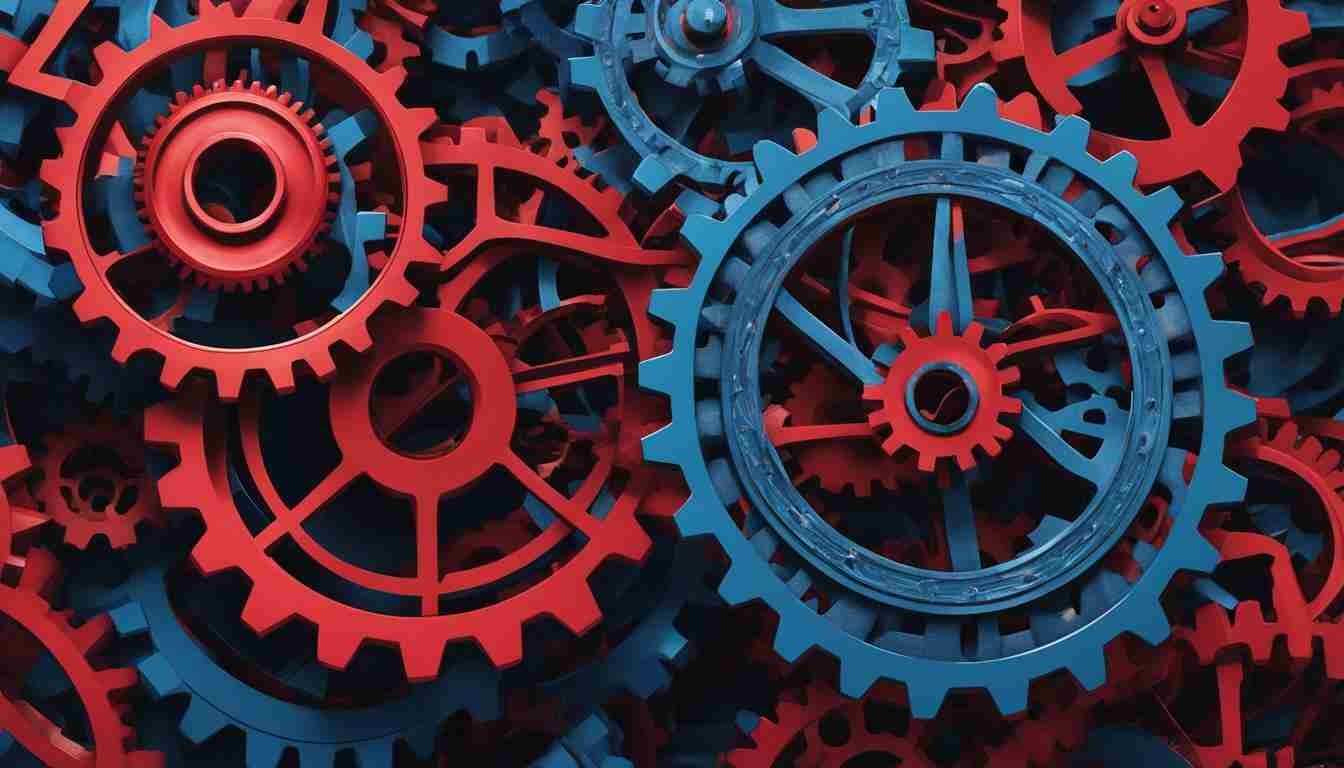Exploring The Intricate Relationship between Motivation and Performance: A Deep Dive
Motivation and performance are intricately connected in various aspects of life, driving individuals to achieve their goals and reach new heights of success. In this deep dive, we will explore the complex relationship between motivation and performance, delving into the psychological factors and different forms of motivation that shape our behaviors and outcomes.
Key Takeaways:
- The relationship between motivation and performance is multifaceted and complex, with various psychological factors influencing both.
- The different forms of motivation, including intrinsic and extrinsic motivation, play a crucial role in driving behavior and achieving goals.
- Setting meaningful goals can enhance intrinsic and extrinsic motivation, contributing to peak performance.
- The impact of feedback, rewards, stress, burnout, and achieving a state of flow should also be considered in understanding the dance between motivation and performance.
- Real-world examples and case studies provide valuable insights into the psychology and practical aspects of motivation and performance.
The Influence of Psychological Factors on Motivation and Performance
Psychological factors play a significant role in shaping an individual’s motivation and performance, influencing their beliefs about their abilities (self-efficacy), their perception of control over outcomes (locus of control), and the driving forces behind their actions (intrinsic and extrinsic motivation).
Self-efficacy, or an individual’s belief in their ability to succeed in a given task, is a critical psychological factor in motivation and performance. High self-efficacy leads to more significant effort, persistence, and confidence, while low self-efficacy can result in feelings of inadequacy and reduced performance. It is important to note that self-efficacy is task-specific, meaning individuals may have high self-efficacy in some areas and low self-efficacy in others.
Locus of control refers to an individual’s belief in their ability to control outcomes. Those with an internal locus of control believe they control their destiny, while those with an external locus of control feel that external factors such as luck or fate play a more significant role. Individuals with an internal locus of control tend to be more confident and have higher motivation and performance levels.
Intrinsic motivation is the internal drive to perform a task for its inherent satisfaction or enjoyment. Examples of intrinsically motivated tasks include pursuing a hobby or engaging in a creative project. Intrinsic motivation is associated with greater creativity, persistence, and performance. In contrast, extrinsic motivation involves performing a task to obtain a reward or avoid punishment. While extrinsic motivation can be effective in the short term, it can reduce intrinsic motivation and lead to lower performance levels over time.
Goal Setting and Motivation: The Power of Achievement
Goal setting is crucial in motivating individuals to strive for excellence through intrinsic or extrinsic factors. Drawing from the principles of self-determination theory, we will examine how setting meaningful goals can fuel motivation and drive performance.
Self-determination theory proposes that individuals are more likely to be motivated when they feel a sense of autonomy, competence, and relatedness. Intrinsic motivation stems from the desire to engage in an activity for its own sake, driven by personal interest and enjoyment. Extrinsic motivation, on the other hand, is driven by external factors such as rewards or recognition.
When setting goals, it’s important to consider both intrinsic and extrinsic factors. Meaningful goals that align with personal values and interests can fuel intrinsic motivation, while goals that offer tangible rewards or recognition can fuel extrinsic motivation. However, it’s important to note that intrinsic motivation is often more sustainable and can lead to greater satisfaction and well-being.
According to self-determination theory, individuals are more likely to be motivated when they have autonomy in setting their goals. This means that individuals should have control over their goals and the methods used to achieve them. Additionally, it’s important to set challenging but achievable goals, providing a sense of competence and progress.
Incorporating goal setting into dance training and performance can effectively fuel motivation and drive performance. By setting and achieving meaningful goals, dancers can enhance their autonomy, competence, and relatedness, leading to greater intrinsic motivation and sustained performance.
Overall, goal setting plays a crucial role in motivating individuals to strive for excellence, whether through intrinsic or extrinsic factors. Drawing from the principles of self-determination theory, setting meaningful goals can fuel motivation and drive performance in the world of dance.
The Impact of Feedback and Rewards on Motivation and Performance
Feedback and rewards can profoundly impact an individual’s motivation and performance, shaping their behaviors and driving their pursuit of success. In this section, we will delve into the importance of constructive feedback, examine the effectiveness of rewards versus punishment, and analyze how they influence intrinsic and extrinsic motivation.
Constructive feedback is crucial for improving performance in dance. Instructors and coaches can help dancers identify areas for improvement, providing specific and actionable feedback that promotes growth and development. This type of feedback is often framed in a positive and supportive manner, emphasizing the value of effort and progress.
In contrast, negative feedback can be demotivating and hinder performance. Harsh criticism can lead to feelings of inadequacy and self-doubt, reducing intrinsic motivation and negatively affecting performance. However, when negative feedback is constructive and supportive, it can be an effective tool for enhancing motivation and performance.
Rewards and punishment are also key drivers of motivation and performance. Rewards can be either intrinsic or extrinsic, with each type affecting motivation differently. Intrinsic rewards come from within oneself, such as the satisfaction of achieving a difficult goal or the joy of dancing. Extrinsic rewards, on the other hand, come from external sources, such as praise, awards, or money.
While both types of rewards can drive motivation, intrinsic rewards are often more powerful in promoting sustained, long-term motivation. Extrinsic rewards can be effective in the short term, but they may lead to a decrease in intrinsic motivation over time. Additionally, punishment can reduce motivation and performance, leading to feelings of fear and anxiety.
To optimize motivation and performance, it is important to strike a balance between constructive feedback and appropriate rewards. Instructors and coaches can use data and metrics to track progress and identify areas for improvement, providing targeted feedback and encouragement. By fostering a positive and supportive environment and using appropriate rewards, dancers can enhance their intrinsic motivation and achieve peak performance.
The Impact of Stress and Burnout on Motivation and Performance
Excessive stress and burnout can have detrimental effects on an individual’s motivation and performance, eroding their drive and hindering their ability to achieve success. This section will examine the impact of stress and burnout on both intrinsic and extrinsic motivation, shedding light on the importance of managing these factors for optimal performance.
The negative impact of stress on motivation and performance is well-documented. High stress levels can trigger the release of cortisol, a hormone that can impair cognitive function, reduce creativity, and hinder decision-making abilities. Stress can also lead to physical and mental exhaustion, making it difficult for individuals to maintain focus and motivation. Intrinsic motivation, driven by personal interest and satisfaction, can be especially vulnerable to the effects of stress, as it is heavily dependent on an individual’s emotional state and internal drive.
Burnout is another factor that can erode motivation and performance. Burnout is characterized by emotional exhaustion, a feeling of detachment, and a sense of reduced personal accomplishment. Burnout can be caused by a variety of factors, including high job demands, lack of control, and insufficient support from colleagues and supervisors. Extrinsic motivation, which is driven by external rewards and recognition, can be particularly susceptible to burnout, as individuals may become disenchanted with the rewards they are receiving or the work they are doing.
Managing stress and avoiding burnout are essential for maintaining motivation and enhancing performance. Strategies that can help include practicing self-care, such as exercise and meditation, setting realistic goals, and seeking support from colleagues and supervisors. Creating a positive work environment, where individuals feel valued and supported, can also go a long way in preventing burnout and enhancing motivation. By recognizing the impact of stress and burnout on both intrinsic and extrinsic motivation, individuals can take steps to manage these factors and optimize their performance.
Flow: The State of Optimal Motivation and Performance
Flow, often described as a state of optimal performance and engagement, holds significant importance in the realms of motivation and performance. By exploring the characteristics of flow and its impact on productivity, creativity, and innovation, we will unveil the key components that facilitate peak performance.
Flow is a state of mind where an individual is fully immersed and absorbed in a task. During this state, the individual experiences a sense of timelessness, complete focus, and heightened creativity. Individuals in flow often report feeling a sense of ecstasy and intrinsic reward, driving them to continue performing at a high level.
The benefits of flow are numerous, particularly in the world of dance. During a flow state, dancers may experience heightened creativity and freedom of expression, leading to performances that are both technically sound and emotionally profound. Moreover, the experience of flow can enhance a dancer’s ability to handle complex choreography and execute challenging movements with ease.
To facilitate a state of flow, certain conditions must be met. The task at hand must be challenging, requiring the dancer to fully engage and use their skills to complete it. At the same time, the task must be achievable, so that the dancer does not feel overwhelmed. A balance between challenge and skill must be struck to induce flow.
Another component of flow is feedback. In a state of flow, the dancer receives immediate feedback on their performance, allowing them to make quick and effective adjustments. This feedback can come from the audience, the music, the dance partner, or even the dancer’s own body. Flow requires a state of mindfulness where the individual is fully present in the moment, aware of their surroundings and their own body.
Finally, the experience of flow requires a level of autonomy. Dancers must feel that they have control over their performance, able to make decisions and take risks as they see fit. This sense of self-determination fuels the sense of intrinsic reward that comes from being in flow.
Flow is a powerful tool for dancers looking to enhance their motivation and performance. By understanding the key components that facilitate flow, dancers can work to create conditions that are conducive to experiencing this state. Whether it’s through challenging choreography, effective feedback, or a sense of autonomy, the experience of flow can lead to performances that are both technically sound and emotionally profound.
Real-World Examples: The Dance of Motivation and Performance
To shed light on the intricate dance between motivation and performance, we will explore real-world examples that demonstrate the profound impact motivation can have in different contexts. From work performance to student achievement, these examples will provide valuable insights into the psychology of motivation.
Motivation Examples for Work Performance
Workplace motivation can have a significant impact on employee productivity and job satisfaction. Research has shown that effective goal setting, recognition, and feedback are effective motivators in the workplace.
For example, at Google, employees are given time to work on personal projects that align with company goals, which has been shown to increase job satisfaction and motivation. Other companies incentivize employees with bonuses, promotions, and other tangible rewards to drive performance.
Motivation Examples for Students
In education, intrinsic and extrinsic motivation can impact student achievement. Intrinsic motivation, which comes from an internal drive, can be cultivated through meaningful, challenging work and a sense of autonomy. Extrinsic motivation, which comes from external rewards like grades, can also be compelling, but it should be used with intrinsic motivation.
For example, a study at the University of Rochester found that students were more motivated to complete challenging tasks when they received supportive feedback and monitored their progress. In another study, high school students who set specific, challenging goals and received feedback on their progress achieved higher grades and were more motivated than those who did not set goals.
Insights from Psychology
Psychology offers valuable insights into motivation and performance. For example, Maslow’s hierarchy of needs suggests that people are motivated by different needs, starting with basic physiological needs like food and shelter and progressing to higher-level needs like self-actualization.
Similarly, Herzberg’s two-factor theory suggests that job satisfaction and dissatisfaction come from two separate sets of factors: hygiene factors, like salary and working conditions, and motivators, like recognition and achievement. Understanding these psychological models can guide how to motivate and enhance performance effectively.
In conclusion, real-world examples across different contexts demonstrate the importance of motivation in driving performance. From work performance to student achievement, motivation can impact productivity, job satisfaction and overall success. Understanding the psychology of motivation and implementing effective strategies, such as goal setting and feedback, can help individuals and organizations reach new levels of excellence.
Conclusion
The intricate dance between motivation and performance unveils a wealth of insights into human achievement. We can enhance our understanding of motivation and performance by implementing motivation techniques and drawing from real-world success stories and psychological models, such as Maslow’s hierarchy of needs, Herzberg’s two-factor theory, and Vroom’s expectancy theory. Additionally, utilizing statistics, data, metrics, and quantitative analysis helps us grasp the trends and research findings to unlock the full potential of both extrinsic and intrinsic motivation.
Real-world examples from the dance world and other fields, such as the Sarah Lawrence College dance program and basketball coaching podcasts, offer valuable perspectives and strategies that can be applied to enhance performance in any domain. Combined with the insights from dancers like Riccardo Cocchi, these sources provide a comprehensive understanding of the factors influencing motivation and performance in dance.
In conclusion, the intricate dance between motivation and performance is a crucial factor in success in any field. By understanding the psychological model’s real-world success stories and utilizing data and metrics to track performance, we can unlock the full potential of both extrinsic and intrinsic motivation. By applying these insights, practitioners of dance and other fields can enhance their performance, reach new levels of excellence, and achieve their goals.
FAQ
Q: What is the relationship between motivation and performance in dance?
A: Motivation and performance are intricately connected in the world of dance. The drive to excel and the ability to perform at a high level are essential for success.
Q: How do psychological factors influence motivation and performance in dance?
A: Psychological factors such as self-efficacy, locus of control, and intrinsic and extrinsic motivation significantly influence motivation and performance in dance.
Q: What is the impact of goal setting on motivation in dance?
A: Goal setting enhances motivation in dance by providing a sense of purpose and direction. Meaningful goals can enhance both intrinsic and extrinsic motivation.
Q: How does feedback and rewards affect motivation and performance in dance?
A: Constructive feedback can positively impact motivation and performance in dance, while rewards and punishment can influence both intrinsic and extrinsic motivation.
Q: What is the impact of stress and burnout on motivation and performance in dance?
A: High levels of stress and burnout can hinder motivation and performance in dance, affecting both intrinsic and extrinsic motivation.
Q: What is flow, and how does it impact motivation and performance in dance?
A: Flow is a state of optimal motivation and performance. Achieving flow can enhance productivity, creativity, and innovation in dance.
Q: Can you provide real-world examples of the intricate dance between motivation and performance in dance?
A: Real-world examples and case studies showcase how motivation drives performance in dance. These examples offer insights into the psychology behind motivation and performance in dance.
Q: What motivation techniques and psychological models can be applied to dance?
A: Motivation techniques and psychological models such as Maslow’s hierarchy of needs, Herzberg’s two-factor theory, and Vroom’s expectancy theory can be applied to enhance motivation and performance in dance. Drawing from real-world success stories and utilizing data, metrics, and quantitative analysis can also contribute to understanding and improving motivation and performance in dance.





